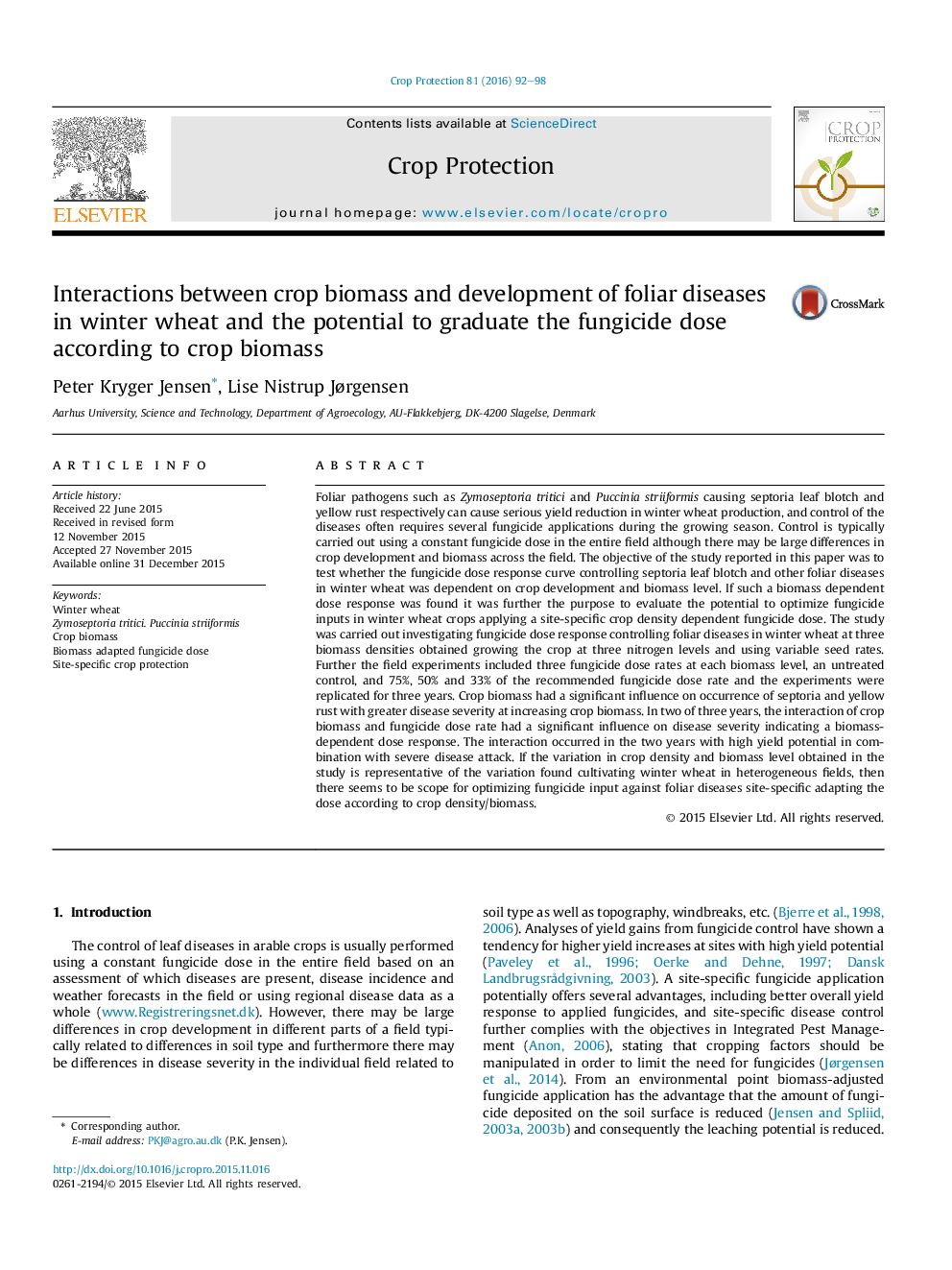| کد مقاله | کد نشریه | سال انتشار | مقاله انگلیسی | نسخه تمام متن |
|---|---|---|---|---|
| 6373270 | 1624306 | 2016 | 7 صفحه PDF | دانلود رایگان |
- Disease attack of septoria tritici blotch (STB) and yellow rust in winter wheat increased with increasing crop biomass.
- A significant biomass Ã fungicide dose rate interaction indicates a potential for optimizing fungicide inputs site-specific.
- Spray deposits on 1st leaf and 2nd leaf varied marginally whereas significant differences were observed on the 3rd leaf.
- This indicates that spray deposition on the 3rd leaf has a significant influence on disease control and crop yield.
Foliar pathogens such as Zymoseptoria tritici and Puccinia striiformis causing septoria leaf blotch and yellow rust respectively can cause serious yield reduction in winter wheat production, and control of the diseases often requires several fungicide applications during the growing season. Control is typically carried out using a constant fungicide dose in the entire field although there may be large differences in crop development and biomass across the field. The objective of the study reported in this paper was to test whether the fungicide dose response curve controlling septoria leaf blotch and other foliar diseases in winter wheat was dependent on crop development and biomass level. If such a biomass dependent dose response was found it was further the purpose to evaluate the potential to optimize fungicide inputs in winter wheat crops applying a site-specific crop density dependent fungicide dose. The study was carried out investigating fungicide dose response controlling foliar diseases in winter wheat at three biomass densities obtained growing the crop at three nitrogen levels and using variable seed rates. Further the field experiments included three fungicide dose rates at each biomass level, an untreated control, and 75%, 50% and 33% of the recommended fungicide dose rate and the experiments were replicated for three years. Crop biomass had a significant influence on occurrence of septoria and yellow rust with greater disease severity at increasing crop biomass. In two of three years, the interaction of crop biomass and fungicide dose rate had a significant influence on disease severity indicating a biomass-dependent dose response. The interaction occurred in the two years with high yield potential in combination with severe disease attack. If the variation in crop density and biomass level obtained in the study is representative of the variation found cultivating winter wheat in heterogeneous fields, then there seems to be scope for optimizing fungicide input against foliar diseases site-specific adapting the dose according to crop density/biomass.
Journal: Crop Protection - Volume 81, March 2016, Pages 92-98
